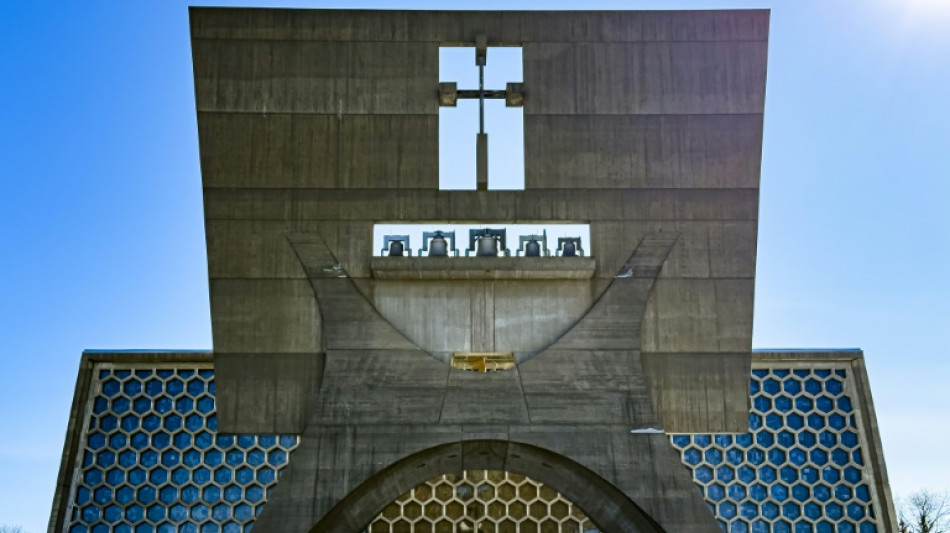
-
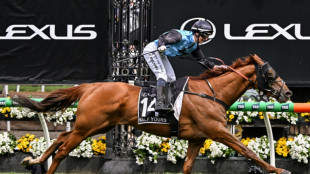 Jamie Melham on Half Yours only second woman to win Melbourne Cup
Jamie Melham on Half Yours only second woman to win Melbourne Cup
-
Myanmar scam hub sweep triggers fraudster recruitment rush

-
 Biggest emitter, record renewables: China's climate scorecard
Biggest emitter, record renewables: China's climate scorecard
-
Floods strand people on roofs as typhoon pounds Philippines

-
 Asian markets swing as trades eye tech rally, US rate outlook
Asian markets swing as trades eye tech rally, US rate outlook
-
South Korea to triple AI spending, boost defence budget
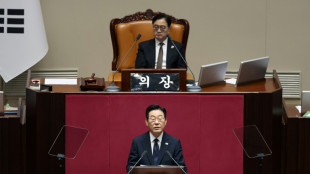
-
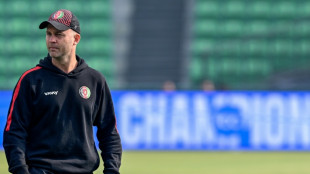 Trott to leave as Afghanistan coach after T20 World Cup
Trott to leave as Afghanistan coach after T20 World Cup
-
Late queen's fashion to go on show at Buckingham Palace
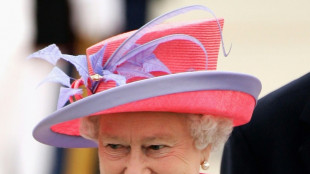
-
 In Morocco, exiled Afghan women footballers find hope on the pitch
In Morocco, exiled Afghan women footballers find hope on the pitch
-
EU scrambles to seal climate deal ahead of COP30

-
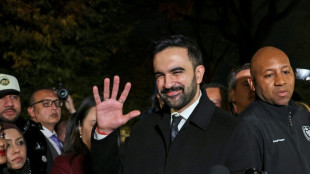 New Yorkers expected to pick leftist Mamdani in stunning election
New Yorkers expected to pick leftist Mamdani in stunning election
-
Pining for Pinochet: how crime fanned nostalgia for Chile's dictator
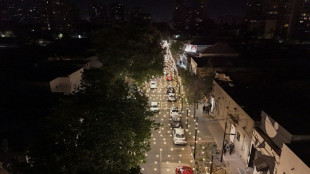
-
 Why an Amazon chef said no to a vegan dinner for Prince William event
Why an Amazon chef said no to a vegan dinner for Prince William event
-
Cement maker Lafarge on trial in France on charges of funding jihadists
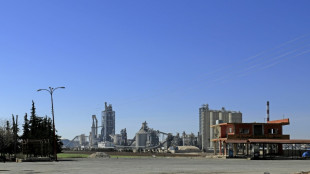
-
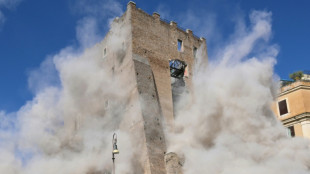 Worker dies after medieval tower partly collapses in Rome
Worker dies after medieval tower partly collapses in Rome
-
Run-machine Labuschagne in form of his life ahead of Ashes

-
 Prince William plays football, volleyball in Rio on climate trip
Prince William plays football, volleyball in Rio on climate trip
-
Jamaicans mobilize aid in aftermath of Melissa's wreckage

-
 Starbucks cedes China control to Boyu Capital
Starbucks cedes China control to Boyu Capital
-
Worker rescued after medieval tower partly collapses in Rome
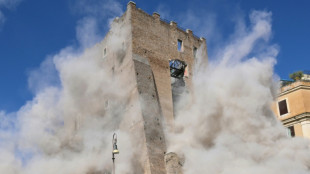
-
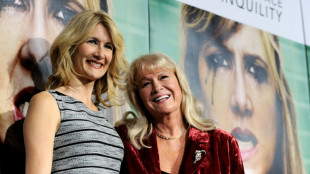 'Wild at Heart' actress Diane Ladd dies at 89
'Wild at Heart' actress Diane Ladd dies at 89
-
Xhaka lifts Sunderland into fourth after Everton draw

-
 Brazil records biggest annual fall in emissions in 15 years: report
Brazil records biggest annual fall in emissions in 15 years: report
-
Victor Conte, mastermind of BALCO doping scandal, dead at 75: company
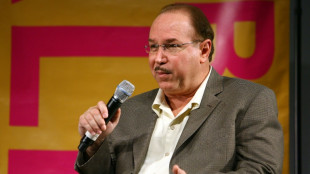
-
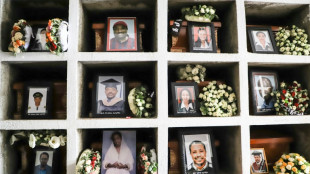 Trial opens in 1st US civil case on 2019 Boeing MAX crash
Trial opens in 1st US civil case on 2019 Boeing MAX crash
-
Mixed day for global stocks as market digests latest AI deals

-
 Barrett brothers out of All Blacks' clash with Scotland
Barrett brothers out of All Blacks' clash with Scotland
-
Medieval tower partially collapses in Rome, trapping worker

-
 Arsenal's Arteta says injured Gyokeres out of Slavia Prague tie
Arsenal's Arteta says injured Gyokeres out of Slavia Prague tie
-
Alonso says 'quality' Wirtz helped get him Real Madrid job
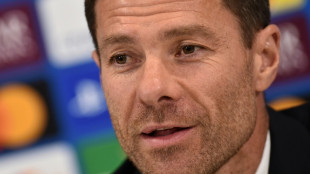
-
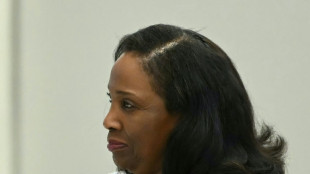 US Fed's Cook warns inflation to stay 'elevated' next year
US Fed's Cook warns inflation to stay 'elevated' next year
-
Blue heaven: huge crowds salute Los Angeles Dodgers in victory parade

-
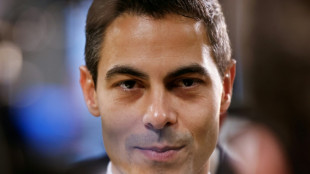 Dutch centrist Jetten clinches election win: final tally
Dutch centrist Jetten clinches election win: final tally
-
Mamdani extends olive branch to anxious NY business community
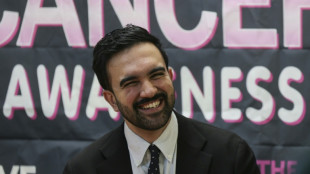
-
 Sierra Leone chimpanzee sanctuary reopens after deforestation protest
Sierra Leone chimpanzee sanctuary reopens after deforestation protest
-
Shein bans sex dolls after France outrage over 'childlike' ones

-
 England full-back Steward doubtful for Autumn rugby clash with Fiji
England full-back Steward doubtful for Autumn rugby clash with Fiji
-
Bayern know how to 'hurt' PSG, says Neuer

-
 Rybakina downs Swiatek to reach WTA Finals last four
Rybakina downs Swiatek to reach WTA Finals last four
-
Ex-France international Ben Yedder to stand trial on rape charges

-
 Djokovic confirmed for ATP Finals, says Italian federation boss
Djokovic confirmed for ATP Finals, says Italian federation boss
-
Trent should be remembered for 'great' Liverpool moments, says Slot

-
 Stock markets diverge despite boost from AI deals
Stock markets diverge despite boost from AI deals
-
Prince William awed by Rio on climate-focused trip to Brazil

-
 Violence in Sudan's El-Fasher could be war crimes, says top court
Violence in Sudan's El-Fasher could be war crimes, says top court
-
Rybakina downs Swiatek in WTA Finals

-
 Turkey, Muslim allies say Palestinian self-rule key to Gaza future
Turkey, Muslim allies say Palestinian self-rule key to Gaza future
-
Tens of thousands shelter as typhoon slams into Philippines

-
 Stock markets rise as tech sector buoyed by fresh AI deal
Stock markets rise as tech sector buoyed by fresh AI deal
-
Vitinha says PSG-Bayern Champions League clash will show who's 'best'
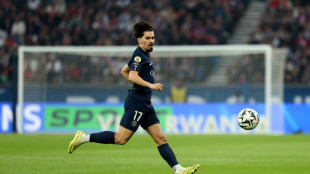

How a 'forgotten' Minnesota monastery inspired 'The Brutalist'
On a snowy prairie in Minnesota stands a monastery like no other. A concrete trapezoid banner encasing a bell tower looms over a giant, beehive-shaped front window composed of hundreds of gently shimmering hexagons.
For half a century, the existence of this modernist masterpiece has been mainly known to the Benedictine monks who worship there, and the hordes of architects who make pilgrimages to Saint John's Abbey Church each summer.
But these days, it is finding new fame as the basis for "The Brutalist," the epic drama about an immigrant architect, haunted by the Holocaust, that is a favorite to win best picture at the Oscars.
The tale of the church's genesis is as unlikely as the movie plot it inspired, spanning titans of architecture, ambitious monks, Vatican reform -- and an almighty row over that beehive window.
Giving tours to guests, abbey member Alan Reed begins by asking his guests: "How could this have happened?"
"That this small college at the time, in the middle of nowhere, run by a group of monks, would hire a world-famous architect... it is an amazing story," he told AFP.
- 'Extraordinary' -
It begins with Baldwin Dworschak, a 44-year-old "buttoned-down" abbot, who inherited stewardship of a monastery rapidly outgrowing its historic grounds in the post-war US boom years of the 1950s.
At a time when the Catholic Church was reforming and modernizing, Dworschak and his advisors saw an opportunity to emulate the pioneering 12th-century European monks who ushered in the then-new Gothic style.
Arranged by a monk who had studied architecture, letters inviting commissions were sent out to Richard Neutra, Walter Gropius, Eero Saarinen and Marcel Breuer -- among the world's leading modernist architects at the time.
Amazingly, several responded, and Breuer -- a Hungarian Jew who had trained at Germany's influential Bauhaus school, and invented the sleek, tubular-steel chairs that furnish trendy offices to this day -- was appointed to oversee the giant church in a far northern corner of the United States.
The design he came up with was "something nobody had ever seen before," said Victoria Young, a professor of architecture at the University of St Thomas in Minnesota, who wrote a book on Breuer's "extraordinary" creation.
Chinese American architect I.M. Pei -- a former student of Breuer -- once wrote that Saint John's Abbey Church would be considered one of the greatest examples of 20th century architecture if it were located in New York, not Minnesota.
- Almighty row -
Brady Corbet, director of "The Brutalist," cites a book written by Hilary Thimmesh, a junior member of Dworschak's committee, as a key source for his movie.
Corbet told AFP he has visited Saint John's, and stumbled upon Thimmesh's memoir while doing extensive reading for the film.
Several parallels are clear: a Jewish architect designing a colossal Christian edifice on a remote US hilltop, in a controversial modernist style.
A major source of dramatic tension in the film occurs when the client -- a millionaire tycoon in the movie, rather than an abbot -- brings in his own designer, undermining the original architect.
In real life, Breuer struck up a friendship with Dworschak, but they fell out when the monks brought in their own stained-glass window designer, spurning the work of Breuer's close friend and former teacher Joseph Albers.
In a bitter letter, Breuer calls the move a "sudden blow" and states it would be "better to do nothing" than go ahead with the monks' preference.
The new design must be "terminated immediately," says another letter -- to no avail.
The power struggle in "The Brutalist" culminates in a horrific act of sexual violence in an Italian marble quarry.
Thankfully, the real-life client and architect quickly made up.
- 'Forgotten' -
Some inevitable Hollywood hyperbole aside, an Oscar-nominated film bringing attention to their monastery's hidden treasure is a source of pride for those connected to Saint John's.
Architect Robert McCarter wrote a book on Breuer "because I felt Breuer had been forgotten, even by the profession, to some degree," he told AFP.
"There are many people who think that Saint John's is, by far, his greatest building. That includes me," he said.
"It's still a place that enough people don't know about," agreed Young.
For the monks of Saint John's today, the film could offer a more practical lifeline.
The church is badly in need of repairs, with some concrete starting to crumble, and steel beginning to rust.
Their order has shrunk, from being the world's largest male Benedictine monastery with 340 monks, to below 100. It is far too few for such a cavernous space.
"If we could raise enough money," the monks could at least heat the church in winter and cool it in summer, said Reed.
And the attention the film is getting?
"The monks certainly are quite impressed," he said.
G.AbuHamad--SF-PST

